July 13th, 2007
And to complement the hydraulic valve driver board here we also have a joystick interface board.
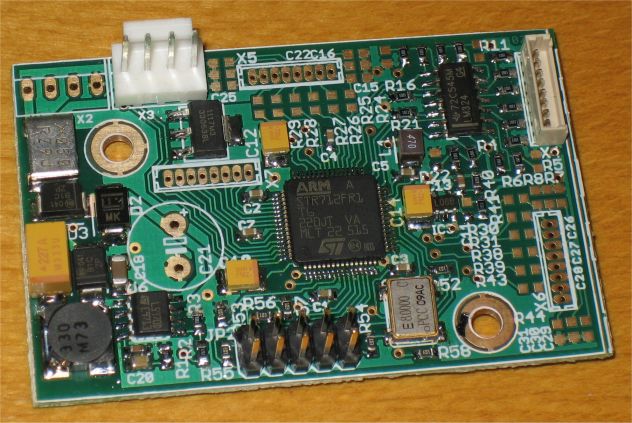
A lot of it is the same as in the valve driver board like RS-232 and CAN interfaces, just the analog section has been changed for accepting input from joysticks and scaling the input signal to be suitable for the AD converter of the STR7 microcontroller. This board supports 4 analog input channels for the joystick axes and 12 digital channels for switches. There are also additional 8 general purpose IO pins in a separate header. These 8 IO pins can be also configured as two separate hardware SPI channels.
Posted in Uncategorized | No Comments »
July 10th, 2007
Adding Bluetooth connectivity.
Bluetooth modules
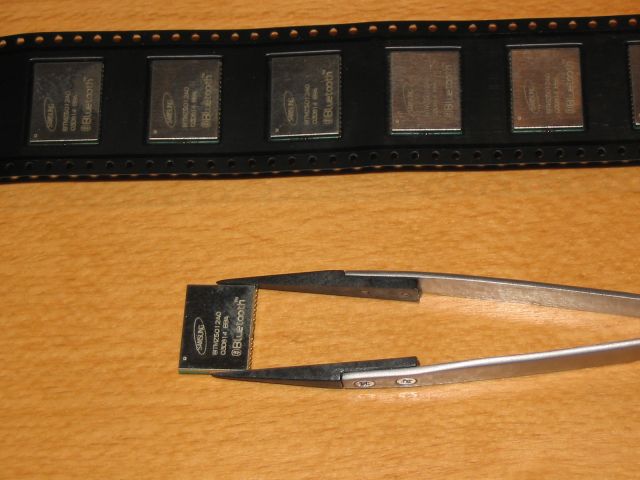
Board built for experimenting with the above modules. Breaking out the serial interface and RS-232 level conversion + other interfaces.
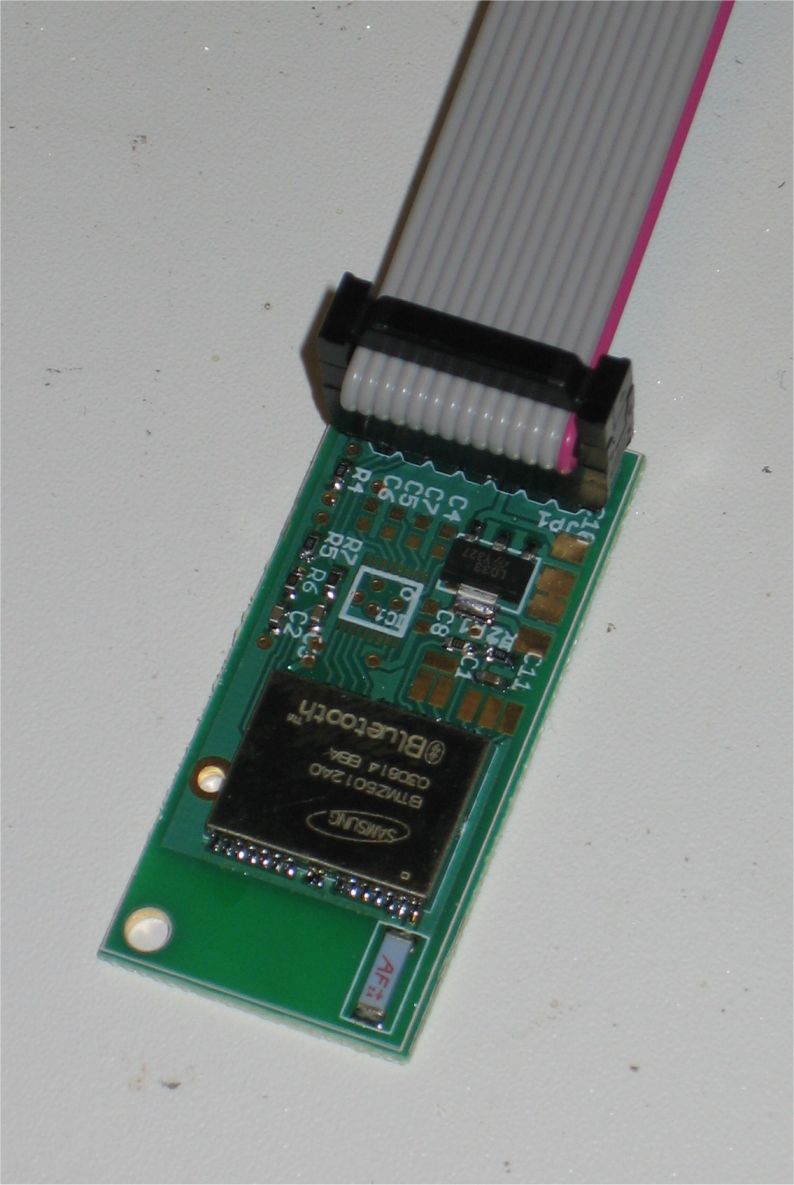
Posted in Uncategorized | No Comments »
July 9th, 2007
Another device in development is a controller board intended mainly for generating the control signal for PVG32 hydraulic valves.
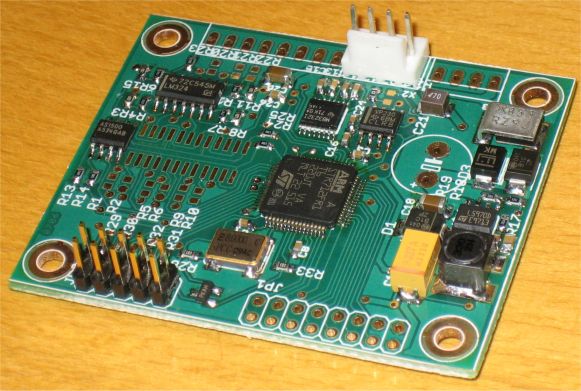
The controller supports both 12V and 24V systems and it has RS-232 and CAN interfaces for communication needs. There are 4 outputs so one module is capable of driving 4 valve sections.
In this module the ratiometric output signals are generated with digital potentiometers. Could compare if there is any difference to PWM generated PVG32 control signal.
The microcontroller used is STR712 from STMicroelectronics so there should be enough processing power for many things…
Also on board is a header with 13 I/O signals and 3.3V + 5V power supplies for additional hardware.
Posted in Uncategorized | No Comments »
May 11th, 2007
Another project in development is a USB interfaced controller board for graphic displays. As it uses the S1D13700 controller from Epson it can support a maximum resolution of 640×240 in 1 bpp mode. Also supported by the Epson controller are 320×240 max at 2 bpp and 240×160 max at 4 bpp. This controller can be used with controllerless LCD panels with 4-bit interface. Included on the board are two common FFC connectors used with these displays and a 2.54mm pitch header for custom wiring. Also included is a DC/DC converter for generating the contrast voltage these displays usually need.
Rendered image of the first prototype
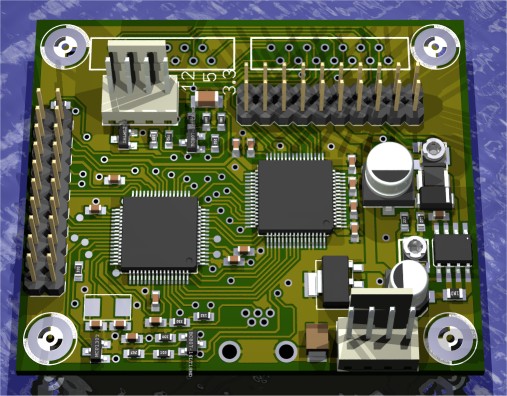
First prototype assembled
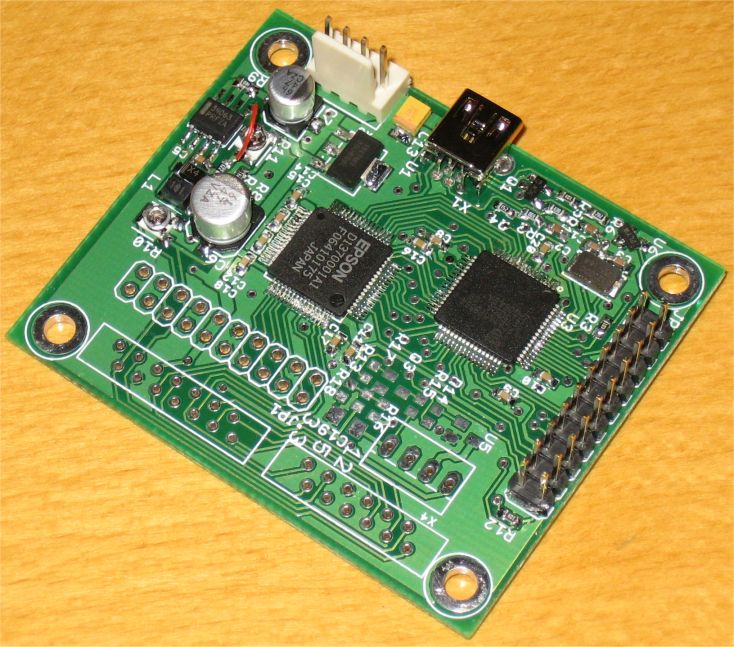
Controller board used in an experiment with a transparent LCD
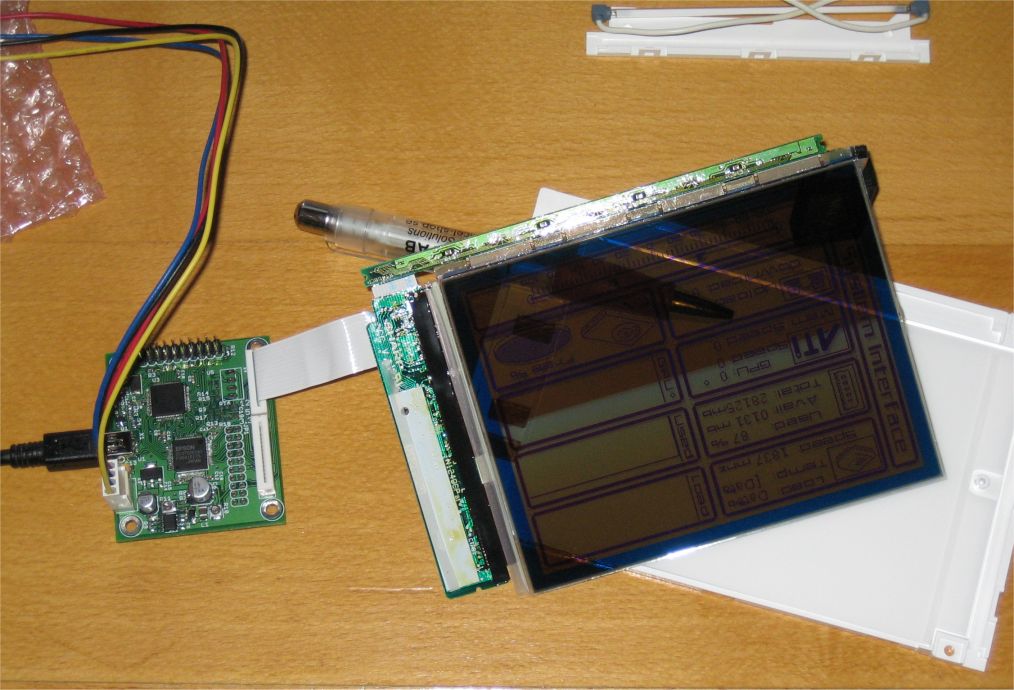
The project was developed further and more information is available here: http://forum.lcdinfo.com/viewforum.php?f=19
Posted in Uncategorized | 2 Comments »
May 9th, 2007
While browsing the Mouser catalog today I noticed something new that I hadn’t seen before. The Cinch ModICE enclosure with integrated connectors.
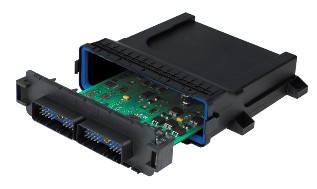
http://www.cinch.com/images/brochures/1146517833-ModICE_Brochure2006.pdf
http://www.mouser.com/catalog/629/1149.pdf
I remember seeing something similar from Deutsch but never seen any pricing for them or a place where I could easily buy it.
Adding together all the parts needed to build a complete system with this ModICE isn’t cheap either but might be worth considering compared to getting a separate enclosure and sealed connector and then figuring out how to make everything fit together with the PCB in the enclosure.
Posted in Uncategorized | No Comments »
May 8th, 2007
I haven’t taken apart a joystick in over 10 years so I wasn’t exactly sure what to expect to find inside a cheap USB joystick these days. The victim here is a commonly available Logitech Extreme 3D Pro joystick.
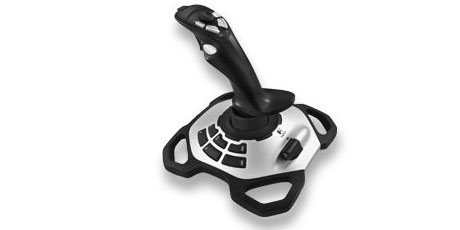
From different angles
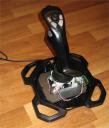
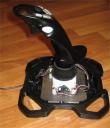
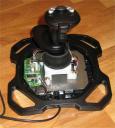


Handle
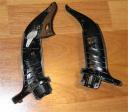
j
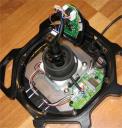
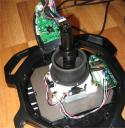
X- and Y-axis potentiometers

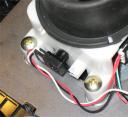
Nothing special here. Potentiometers as a voltage divider. The voltage going to the potentiometers is about 4 V and the output between 0.4 V and 3.6 V. The potentiometers have been attached straight to the ends of the axles of the mechanism without any gears and the handle moves about +-18° so the potentiometers move only about 1/10 of a full circle. Can’t predict very long life for small cheap potentiometers this way. Potentiometers could be replaced with better potentiometers or with hall effect sensing.
Handle buttons
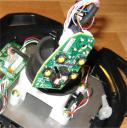
The switches for the buttons and the 8-way hat look to be a common type so they could be replaced with better quality switches when they break.
Overall it doesn’t look as bad as I thought it might be. The potentiometers might not last long but if replaced with hall effect sensing for example things should be better. Also the mechanism in the base is about 7 x 7 cm so it could be placed in a smaller enclosure.
Posted in Uncategorized | No Comments »
May 8th, 2007
Another little device that I made earlier this year is a USB interface board for a Noritake -3900 series graphical VFD display.

Here we have the interface connected to a GU256x128C-3900 display.

This interface is useful for easy communication and fast update speeds allowing for example animation when using these displays with a PC. These are also available for sale if someone needs one. The USB interface boards have been used with the 256×128 and 256×64 sizes for now but other resolutions from the 3900 series are also possible if needed.
Posted in Uncategorized | No Comments »
April 16th, 2007
A little piece of software made to help in evaluating the performance of some accelerometers from Analog Devices, Freescale and VTI. Still work in progress and features added as needed.
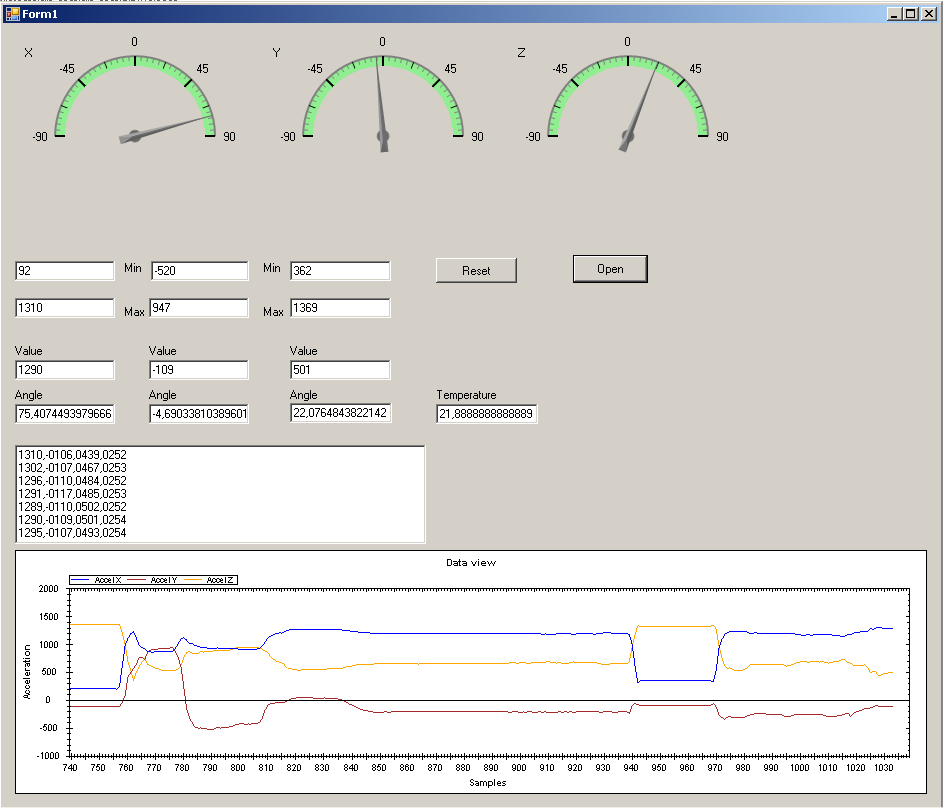
Posted in Uncategorized | No Comments »
January 21st, 2007
Some drawings once made to figure out how different type parallel cranes actually move and what kind geometry they have.
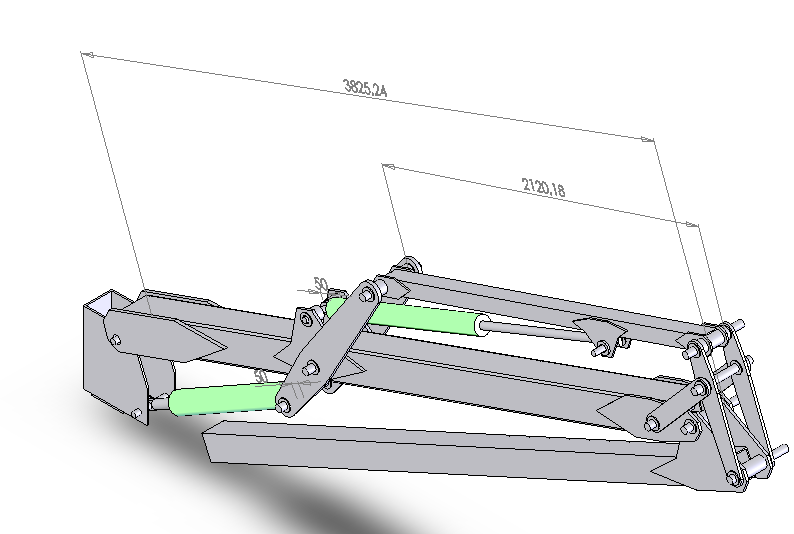
Animations of two different types moving:
V1 ~1.5MB
V2 ~1.5MB
Posted in Uncategorized | No Comments »
January 13th, 2007
Putting together some basic framework and data structures for handling GPS data. Conversions from GPS coordinates to screen coordinates and back, scaling, drawing track logs etc.
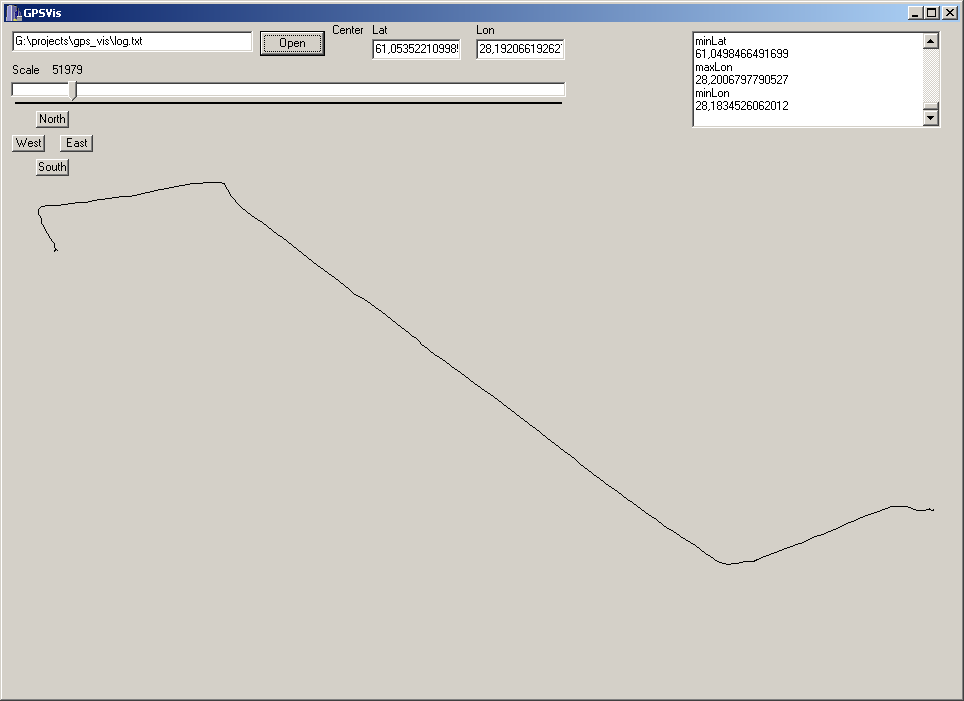
Posted in Uncategorized | No Comments »
























